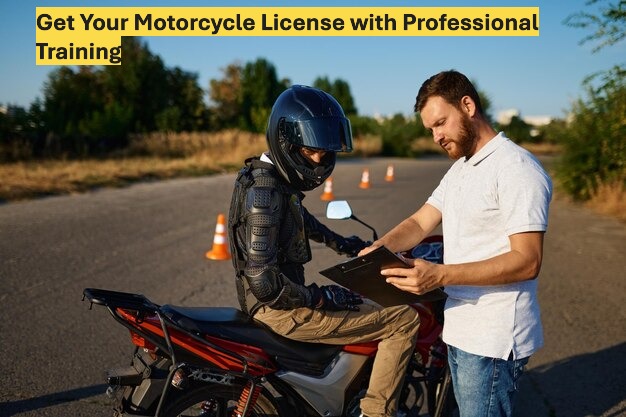How to Pass Your Truck Driving Test Expert Tips

The truck driving test is more than a requirement—it’s the gateway to a promising career in the transportation industry. Whether you’re aiming to drive long hauls across the country or operate delivery trucks within a local area, successfully passing your truck driving test is essential for obtaining your Commercial Driver’s License (CDL).
However, passing the test isn’t simply about knowing how to drive a truck. It’s about mastering the specific skills, knowledge, and safety protocols required for operating large vehicles. In this comprehensive guide, we’ll break down expert strategies to ensure you pass your truck driving test confidently, offering insights into the key areas examiners focus on.
From preparation to overcoming test anxiety, we’ll cover every aspect of the process. Let’s dive in and explore how to successfully navigate the journey to earning your CDL.
1. Understand the Structure of the Truck Driving Test
The truck driving test is broken down into several sections. Each evaluates the skills required to ensure you’re fully prepared to operate a large commercial vehicle safely. Understanding the structure will help you prepare thoroughly.
Written Test
The written test evaluates your knowledge of traffic laws, regulations, and best practices specific to commercial vehicles. Topics may include:
- Traffic signs
- Speed limits
- Weight limits and road restrictions
- Hours of service regulations
- Essential vehicle maintenance and safety protocols
Before your test, study your state’s CDL manual thoroughly and practice using online mock exams. This will ensure you’re well-prepared for the theoretical part of the test.
Pre-Trip Inspection
The pre-trip inspection is critical. You’ll be asked to demonstrate how to properly inspect your truck before taking it on the road. This step ensures that your vehicle is safe to drive, minimizing the risk of accidents. In this part of the test, you’ll need to:
- Identify key components of the truck (brakes, tires, lights, etc.)
- Ensure that the truck is in good working condition.
- Identify any visible signs of damage or wear.
Being methodical and thorough is essential. Practice the inspection regularly so it becomes second nature.
Skills Test
This test part evaluates your ability to control the truck in various scenarios. You’ll be asked to perform key maneuvers such as:
- Backing up
- Parallel parking
- Turning
- K-turns
- Lane changes
A skilled instructor or experienced driver helping you practice these maneuvers will build your confidence and reduce the chance of making mistakes.
On-Road Driving
The final part of the test is the on-road driving test. Here, you’ll drive the truck in real-world traffic conditions. You’ll be assessed on your ability to:
- Obey traffic laws
- Follow speed limits
- Use turn signals and mirrors.
- Navigate intersections
- Handle different weather conditions.
The examiner will look for safe driving practices, and being calm and focused on the road is crucial.
2. Master Your Pre-Trip Inspection
The pre-trip inspection is a crucial section of the test and the first impression you’ll make. If you fail this section, you won’t move on to the subsequent phases of the test.
A truck inspection checklist can help you stay organized during your inspection. Ensure you are familiar with every aspect of your vehicle. The main areas to inspect include:
- Tires: Check for proper inflation and tread depth.
- Brakes: Make sure the air brakes are functional.
- Lights: Ensure all headlights, brake lights, and turn signals work.
- Engine: Look for any visible leaks, loose parts, or signs of damage.
- Cargo: Ensure that the cargo is secured correctly and balanced.
By conducting a thorough inspection, you demonstrate to the examiner that you can identify potential safety hazards, which is critical for the job.

3. Focus on Key Maneuvers
One of the most intimidating parts of the truck driving test is parallel parking. Because large trucks have unique handling and blind spots, parallel parking can seem complicated. However, with proper techniques, you can master this maneuver.
Here’s a step-by-step guide to parallel parking a truck:
- Position your vehicle: Line up the car alongside the parking space, ensuring enough room to fit.
- Check your mirrors: Before starting the maneuver, check your mirrors and blind spots to ensure no obstacles.
- Back into the space: Slowly reverse the truck into the space, turning the wheel to angle the car correctly.
- Adjust as needed: If you’re not perfectly aligned, adjust your position by moving forward and correcting your angle.
Practice this maneuver in various environments to develop muscle memory. The more comfortable you are, the easier it will be to perform under pressure during the test.
4. Master Road Safety Protocols
Road safety is paramount for every truck driver. The examiner will be keen on your ability to drive safely under various road conditions. Here are key road safety tips for passing your on-road driving test:
- Maintain a safe following distance: Trucks require longer stopping distances, so leave adequate space between you and the vehicle in front. This is particularly important in adverse weather conditions or heavy traffic.
- Signal early and often: Always use your indicators well in advance before turning or changing lanes. This ensures that other drivers know your intentions and can anticipate your movements.
- Watch for blind spots: Trucks have large blind spots, especially on the sides and rear. Use your mirrors effectively, and when necessary, turn your head to double-check before making lane changes.
- Use the proper lane: Always stay in the right lane when possible, especially on highways, unless you need to pass other vehicles.
- Drive defensively: Anticipate the actions of other drivers, especially in high-traffic areas, and be prepared to react safely.
Demonstrating these road safety practices will show your examiner that you are prepared for real-world driving.
5. Prepare Mentally and Physically
While technical skills are essential, mental preparation is equally important. Truck driving tests can be stressful, especially for first-timers. Preparing mentally and physically will help you stay focused and calm during the test.
Here are a few tips for mental preparation for driving test success:
- Get enough rest: Sleep is crucial for cognitive function and focus. Ensure you’re well-rested before your test to be sharp and alert.
- Practice relaxation techniques: Techniques like deep breathing or visualization can help reduce anxiety and calm your nerves before the test.
- Stay positive: Visualize yourself succeeding. Positive self-talk and confidence can make a huge difference in your performance.
- Stay hydrated: Proper hydration keeps you focused and prevents fatigue during the test.
Remember, the test ensures you’re ready to drive safely. Keeping a positive mindset will help you approach the test with confidence.
6. Common Mistakes to Avoid
It’s easy to make mistakes, especially when you’re under pressure. Here are common mistakes to avoid during your truck driving test:
- Failing to check blind spots: Not checking your blind spots before changing lanes or making turns can result in automatic failure.
- Rushing through the inspection: If you rush through the pre-trip inspection, you might miss critical checks, leading to test failure.
- Overcorrecting on maneuvers: If you make a mistake while performing a maneuver like backing up, don’t panic and overcorrect. Calmly readjust and continue.
- Not following road safety rules: Speeding, not signaling, or failing to yield at the right time can all lead to penalties during the on-road portion of the test.
FAQs
1. How long does the truck driving test take?
The truck driving test typically lasts 1 to 2 hours, depending on the state and the complexity of the skills test.
2. What happens if I fail the truck driving test?
If you fail the test, you can retake it after a certain period, usually one to two weeks, depending on local regulations.
3. How many times can I take the truck driving test?
Most states allow you to retake the test as often as needed, but you may need to pay a retest fee each time.
4. Can I use my truck for the driving test?
Yes, most states allow you to use your truck, provided it meets all safety and size requirements for the test.
5. How can I reduce test anxiety for my truck driving exam?
Practice regularly, get a good night’s sleep before the test, and stay calm during the exam. Deep breathing techniques can also help reduce anxiety.
Conclusion
Passing your truck driving test takes preparation, focus, and practice. By understanding the structure of the test, mastering key maneuvers, and ensuring you are well-prepared mentally and physically, you increase your chances of success. Remember, the road to becoming a professional truck driver is paved with diligence, practice, and confidence.
By following these expert tips, you’ll be ready to ace your truck driving test and begin a successful career behind the wheel.




